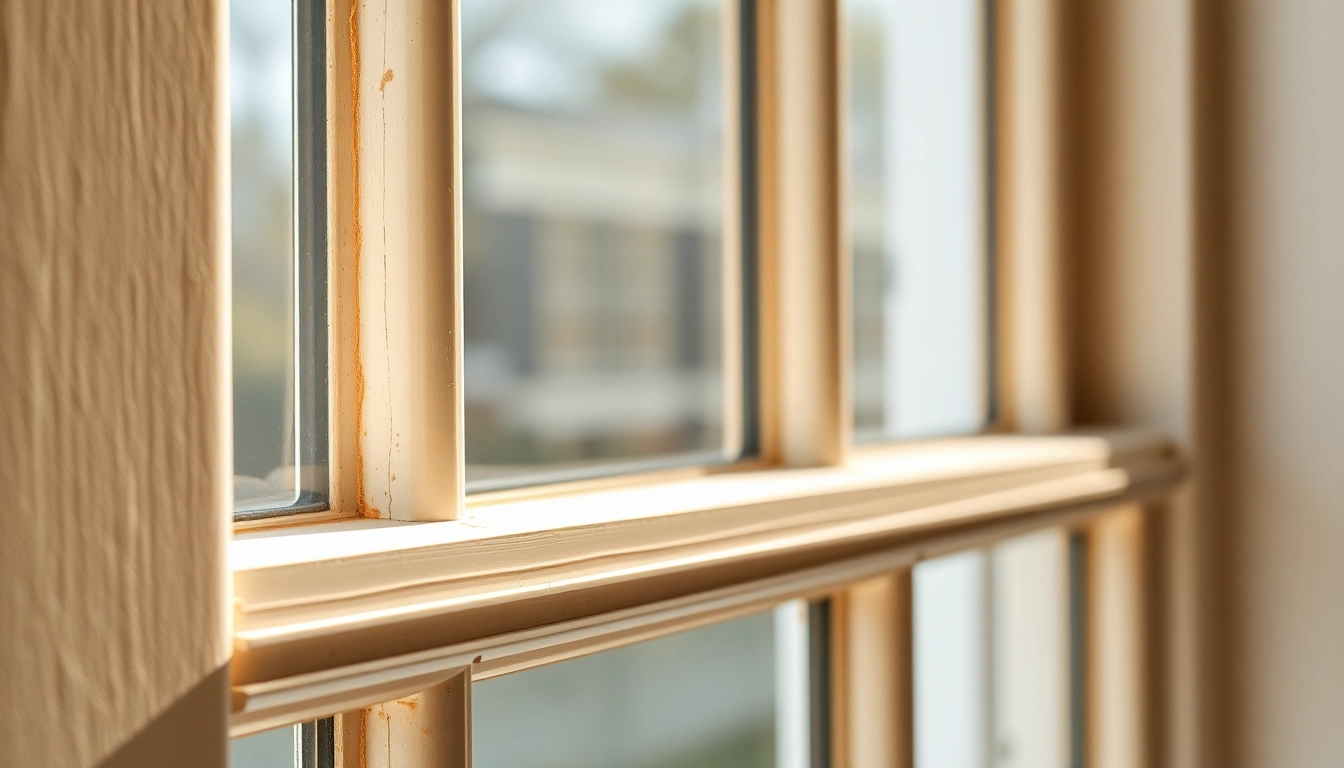Understanding Sash Window Insulation and Its Benefits
In the realm of traditional UK homes and period properties, sash windows are iconic elements that blend aesthetic charm with historical value. However, their classic design often presents challenges in modern energy efficiency, especially when it comes to maintaining warmth during colder months. This is where sash window insulation becomes essential. Properly insulating these windows not only enhances comfort but also significantly reduces heating costs, contributing to a more sustainable and cost-effective living environment. Understanding the significance of sash window insulation involves grasping its core benefits, typical causes of heat loss, and how tailored solutions can make a substantial difference in your home’s overall energy performance.
Why Insulating Sash Windows Matters
Insulation is a fundamental aspect of any energy-efficient home. Sash windows, particularly older or poorly maintained ones, are notorious for allowing heat to escape, primarily through gaps, poor seals, and single-glazed panes. This heat loss not only leads to higher energy bills but also impacts indoor comfort and can promote drafts, cold spots, and even condensation issues that threaten the integrity of your property. Additionally, in the context of environmental responsibility, reducing energy consumption through effective sash window insulation aligns with broader sustainability goals.
For homeowners looking to optimize their dwelling’s thermal performance, investing in sash window insulation can be a game-changer. Expert insights suggest that installing double glazing can improve thermal resistance significantly, while supplementary measures like draft proofing seal gaps and adding secondary glazing further amplify insulation benefits. The key is to adopt comprehensive strategies that acknowledge the unique architectural features of sash windows, ensuring style does not compromise energy efficiency.
Common Heat Loss Causes in Sash Windows
Understanding why sash windows contribute to heat loss is critical in selecting the appropriate insulation remedy. The main culprits include:
- Single Glazing: Traditional sash windows with single-pane glass allow heat to transfer easily through conduction. This is the primary source of thermal inefficiency, with some estimates showing single-glazed sash windows leaking over 70% of their heat in severe cases.
- Gaps and Drafts: Well-worn or poorly installed windows develop gaps around sashes, frames, or between the window and brickwork. These gaps cause drafts, which can significantly lower indoor temperatures and increase heating demands.
- Faulty or Warped Frames: Wooden frames that have warped, rotted, or degraded over time fail to fit securely, allowing air infiltration and heat escape.
- Inadequate Seals and Draft Proofing: Lack of effective seals around sashes and hardware allows cold air to penetrate while warm air leaks out.
Additional factors such as external weather conditions and the presence of external shutters or uninsulated upper sashes exacerbate heat loss, emphasizing the need for targeted insulation solutions.
How Proper Insulation Improves Home Comfort
Effective sash window insulation transforms how warmth is retained within your home. By reducing drafts and blocking thermal bridges, a well-insulated sash window maintains a stable, comfortable indoor climate. This is particularly impactful during winter, when cold air infiltrates less and the central heating system operates more efficiently.
Consumers often notice immediate improvements in comfort levels, with fewer cold spots and drafts, leading to a cozier environment. Over time, the energy savings can be substantial; studies suggest that insulating sash windows can cut heating bills by up to 30%, translating to significant financial savings annually. Moreover, better insulation reduces condensation risks, preventing mould growth and protecting internal finishes.
Types of Sash Window Insulation Solutions
Double Glazing for Maximum Insulation
Double glazing remains the gold standard for thermal performance enhancement in sash windows. Modern sash window double glazing involves inserting two panes of glass within a sash frame, separated by an insulating space filled with air or inert gases like argon. This configuration minimizes heat transfer via conduction and convection, drastically improving U-values—an essential measure of insulation effectiveness.
Advantages of double-glazed sash windows include improved soundproofing, enhanced security, and increased energy efficiency. Many historic property owners opt for slim-profile double-glazing that preserves the aesthetic authentic to traditional sash windows, ensuring compliance with conservation guidelines while achieving modern thermal standards.
Multiple case studies indicate that double-glazing sash windows can reduce heat loss by up to 60-70% compared to single glazed units, resulting in rapid payback through energy savings.
Draft Proofing Techniques and Materials
Draft proofing involves sealing gaps and preventing air infiltration without compromising window operation or aesthetics. Techniques include:
- Sash Window Brush Seals: These are flexible brushes fitted into the reply channels of the sash frames, creating a seal that blocks drafts effectively while allowing smooth operation.
- Seal and Weather Stripping: Adhesive foam, silicone, or rubber strips applied around sashes and the frame seal gaps up to 5mm, significantly reducing draughts.
- External Shutters and Interior Curtains: Wooden shutters or heavy, layered curtains serve as insulation barriers, especially when drawn at night or during colder periods.
- Snap-on or Magnetic Gaps Fillers: Easy-to-install, removable fillers that adapt to different gap sizes, providing a temporary or semipermanent solution.
Professionally applied draft-proofing can reduce air leakage by over 50%, improving comfort and energy efficiency with minimal structural changes.
Supplementary Insulation Accessories
Beyond sealing and glazing, various accessories can further enhance sash window insulation:
- Secondary Glazing: Installing an additional lightweight panel inside the existing sash window creates a double-glazed effect without altering the original frame. Ideal for listed buildings, secondary glazing offers a high thermal upgrade with less invasive installation.
- Insulating Window Films: Reflective or thermal window films applied directly to glass panes can reduce heat transfer, especially effective if replacing the glass isn’t feasible.
- Heavy-duty Window Curtains and Thermal Blinds: Using lined curtains or thermal blinds offers an added layer of insulation that traps warm air in the room, especially effective during overnight periods.
- Gapseal or Foam Strip Seals: Specific gap fillers like Gapseal or self-adhesive foam tapes are designed for quick installation in gaps up to 5mm, ideal for DIY projects.
Step-by-Step Guide to Insulating Sash Windows
Preparing Your Windows for Insulation
Preparation ensures the longevity and effectiveness of your insulation. Begin by inspecting your sash windows comprehensively for damaged or rotten wood, warping, or faulty hardware. Clean the frames thoroughly, removing any dust, dirt, or peeling paint that could hinder seal adhesion.
Measure gaps around the sash for selecting suitable draft-proofing materials. Consider consulting a professional for detailed assessments or using thermal imaging cameras to identify cold spots that indicate air leakage.
Installing Double Glazing or Seals
For double glazing, choose high-quality units designed to fit your sash windows’ dimensions. The process typically involves removing or temporarily detaching the existing sashes, fitting the new glazed units, and reattaching the sashes securely. Professional installation is recommended for best results, especially in heritage settings where structural preservation is critical.
If opting for draft proofing seals, measure the sash-to-frame gaps accurately and select appropriate brush seals or gap fillers. Apply weatherstripping along the sashes and frame edges, ensuring smooth operation without overtightening, which can hinder sash movement.
For secondary glazing, install lightweight panels using clips, magnetic strips, or bespoke frames, maintaining the authenticity of the original windows while enhancing insulation.
Checking and Maintaining Insulation Effectiveness
Once installed, periodically inspect seals, hardware, and glazing integrity. Look for signs of wear, damage, or displacement, and perform maintenance promptly. Use energy auditing tools, like thermal cameras, to verify the effectiveness of your insulation upgrades.
Regularly curtain or shutter your windows as an additional measure, and consider upgrading seals or adding secondary glazing as needed. Proper maintenance ensures long-term performance and preserves the aesthetic and functional value of your sash windows.
Professional vs DIY Sash Window Insulation
When to Hire Experts
Professional intervention is advisable when dealing with complex or historic sash windows that are listed or fall under conservation regulations. Experts can accurately assess your windows’ condition, recommend appropriate measures, and execute installations that maintain aesthetic integrity and structural safety.
Proficiency is especially beneficial for double-glazing installation, ensuring minimal disturbance to traditional features and compliance with planning permissions.
DIY Insulation Best Practices
For the confident DIY enthusiast, numerous products facilitate effective insulation without professional help. These include self-adhesive foam tapes, brush seals, and secondary glazing kits. Key tips for success include:
- Careful measurement of gaps and sash dimensions.
- Cleaning surfaces thoroughly before application.
- Following manufacturer instructions meticulously for seals and glazing.
- Performing tests after installation to ensure sash operates smoothly and seals are airtight.
DIY approaches typically cost less upfront but may require multiple adjustments or replacements over time, emphasizing the importance of quality products and cautious workmanship.
Cost Considerations and Long-Term Savings
While professional installations may involve higher initial costs, the long-term savings on energy bills and increased comfort often justify the investment. Typical expenses include the price of glazing units (ranging from £300-£600 per window), professional labor, and supplementary materials.
DIY measures primarily involve purchasing seals and accessories, with costs from £20 to £150 per window. Over time, improved insulation reduces heating bills substantially. Energy assessments reveal that effective sash window insulation can lower heat loss by up to 70%, translating into annual savings of hundreds of pounds depending on property size and energy prices.
Measuring and Choosing the Right Insulation Products
Assessing Gaps and Drafts Accurately
Precise measurement of gaps and sash dimensions is paramount. Use a folding ruler, micrometer, or digital caliper for accuracy. Expect to find gaps up to 5mm around sashes, frames, and hardware, which are the primary entry points for cold air.
Thermal imaging surveys can pinpoint cold spots on your windows, enabling targeted insulation strategies that maximize efficiency while preserving aesthetics.
Selecting Suitable Seals and Glazing Options
Choose insulation materials compatible with your sash window type and aesthetic preferences. For double glazing, opt for slim-profile, heritage-compatible units for listed properties. When selecting draught-proofing seals, consider:
- Material flexibility and durability (brush, foam, or rubber).
- Ease of installation, especially for DIY projects.
- Compatibility with existing hardware and sash mechanisms.
- Weather resistance and long-term performance.
Consult product specifications and, when possible, seek expert advice to ensure the chosen solutions align with your home’s requirements.
Ensuring Compatibility with Your Sash Windows
Compatibility involves ensuring that the selected insulation solutions do not impair the operation or appearance of your sash windows. Always check measurements carefully, consider the weight added by secondary glazing, and verify that seals do not hinder sash movement.
In conservation zones or heritage buildings, opt for minimally invasive solutions that adhere to preservation guidelines, such as internal secondary glazing or discreet draft proofing brushes.



